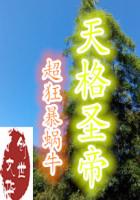You will see many deer thus from the trail,--in fact, we kept up our meat supply from the saddle, as one might say,--but to enjoy the finer savor of seeing deer, you should start out definitely with that object in view.Thus you have opportunity for the display of a certain finer woodcraft.You must know where the objects of your search are likely to be found, and that depends on the time of year, the time of days their age, their sex, a hundred little things.When the bucks carry antlers in the velvet, they frequent the inaccessibilities of the highest rocky peaks, so their tender horns may not be torn in the brush, but nevertheless so that the advantage of a lofty viewpoint may compensate for the loss of cover.Later you will find them in the open slopes of a lower altitude, fully exposed to the sun, that there the heat may harden the antlers.Later still, the heads in fine condition and tough to withstand scratches, they plunge into the dense thickets.But in the mean time the fertile does have sought a lower country with patches of small brush interspersed with open passages.There they can feed with their fawns, completely concealed, but able, by merely raising the head, to survey the entire landscape for the threatening of danger.The barren does, on the other hand, you will find through the timber and brush, for they are careless of all responsibilities either to offspring or headgear.These are but a few of the considerations you will take into account, a very few of the many which lend the deer countries strange thrills of delight over new knowledge gained, over crafty expedients invented or well utilized, over the satisfactory matching of your reason, your instinct, your subtlety and skill against the reason, instinct, subtlety, and skill of one of the wariest of large wild animals.
Perversely enough the times when you did NOT see deer are more apt to remain vivid in your memory than the times when you did.I can still see distinctly sundry wide jump-marks where the animal I was tracking had evidently caught sight of me and lit out before I came up to him.Equally, sundry little thin disappearing clouds of dust; cracklings of brush, growing ever more distant; the tops of bushes waving to the steady passage of something remaining persistently concealed,--these are the chief ingredients often repeated which make up deer-stalking memory.When Ithink of seeing deer, these things automatically rise.
A few of the deer actually seen do, however, stand out clearly from the many.When I was a very small boy possessed of a 32-20 rifle and large ambitions, I followed the advantage my father's footsteps made me in the deep snow of an unused logging-road.
His attention was focused on some very interesting fresh tracks.I, being a small boy, cared not at all for tracks, and so saw a big doe emerge from the bushes not ten yards away, lope leisurely across the road, and disappear, wagging earnestly her tail.
When I had recovered my breath I vehemently demanded the sense of fooling with tracks when there were real live deer to be had.My father examined me.
"Well, why didn't you shoot her?" he inquired dryly.
I hadn't thought of that.
In the spring of 1900 I was at the head of the Piant River waiting for the log-drive to start.One morning, happening to walk over a slashing of many years before in which had grown a strong thicket of white popples, I jumped a band of nine deer.I shall never forget the bewildering impression made by the glancing, dodging, bouncing white of those nine snowy tails and rumps.
But most wonderful of all was a great buck, of Ishould be afraid to say how many points, that stood silhouetted on the extreme end of a ridge high above our camp.The time was just after twilight, and as we watched, the sky lightened behind him in prophecy of the moon.
ON TENDERFEET















